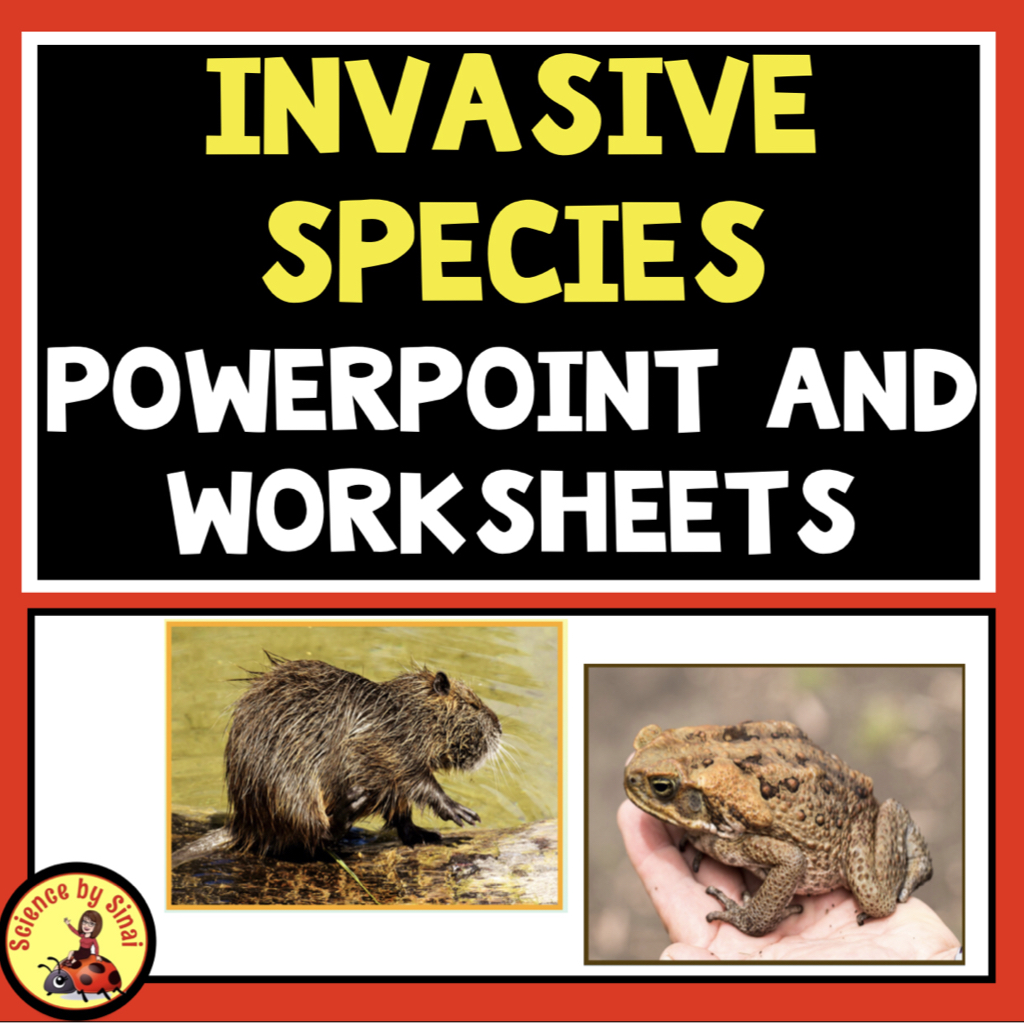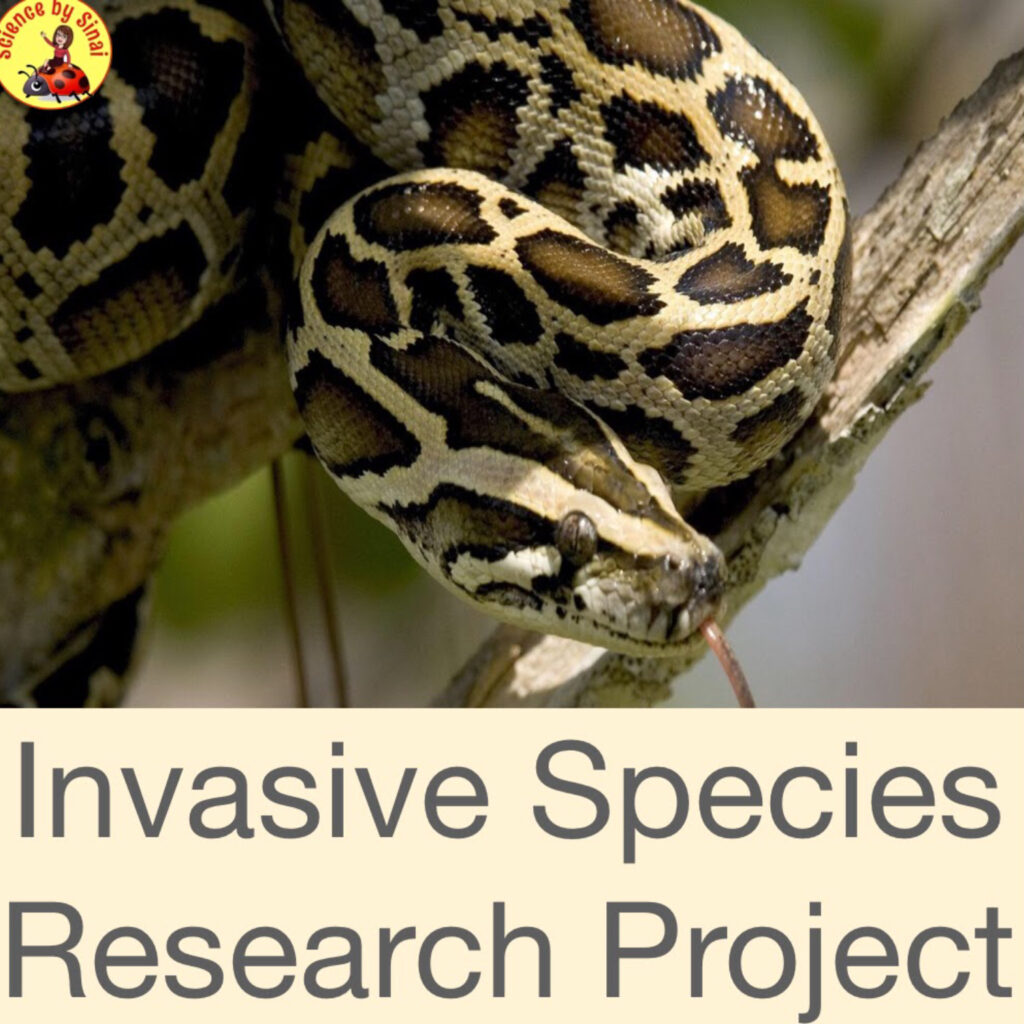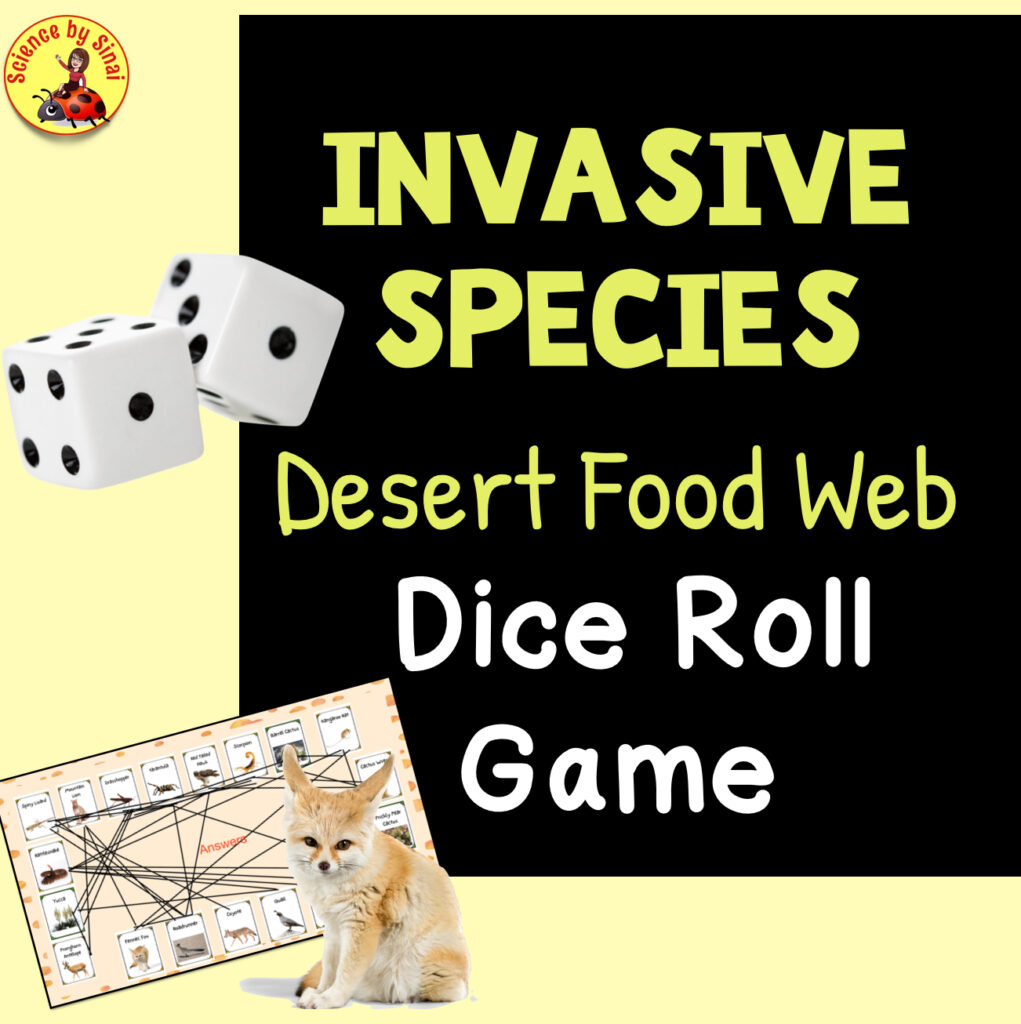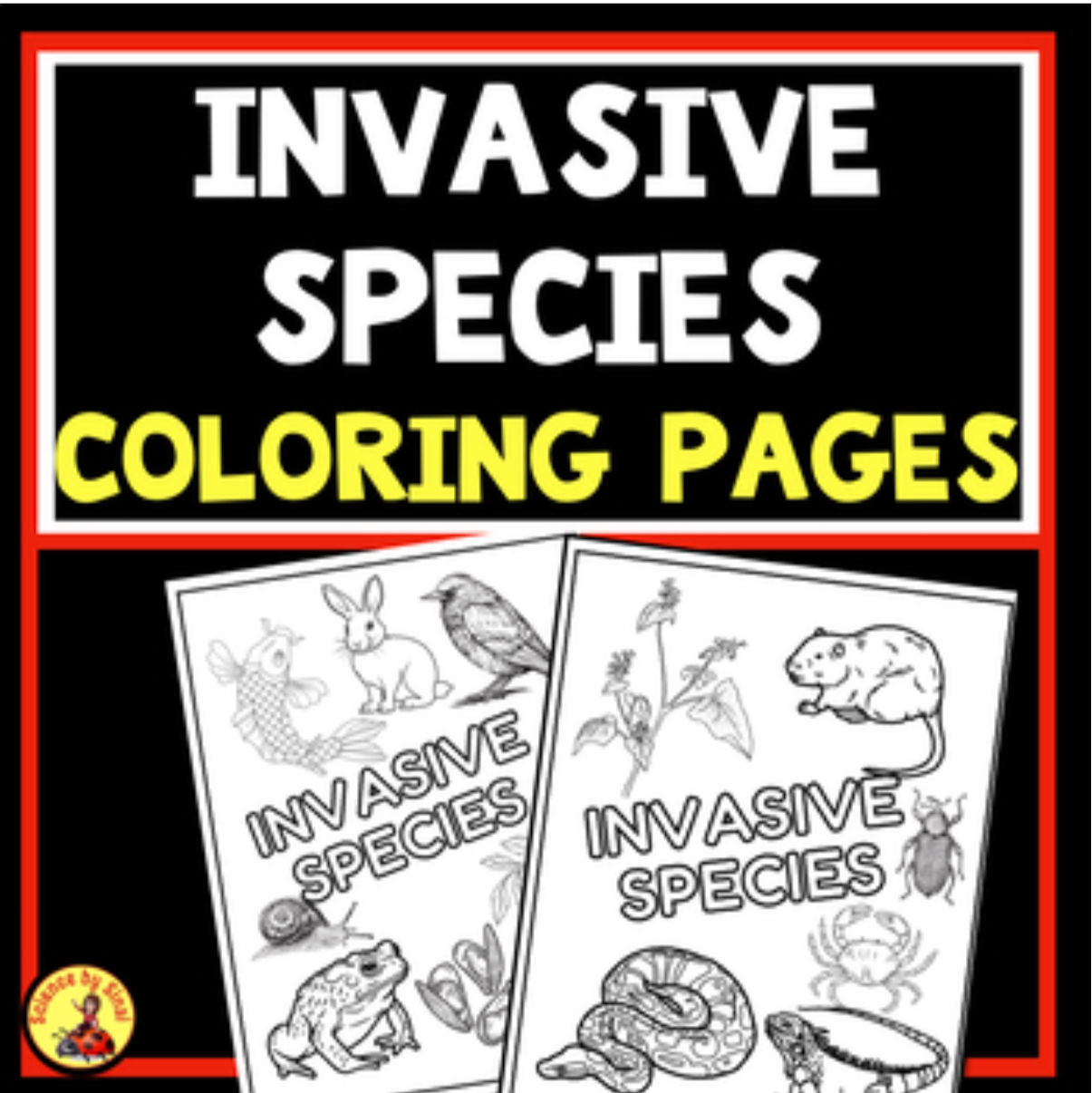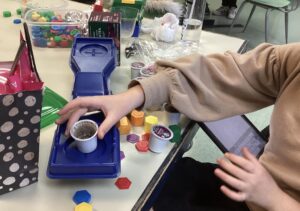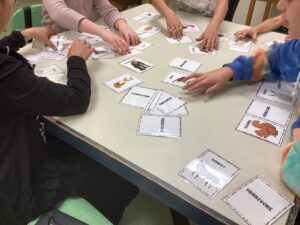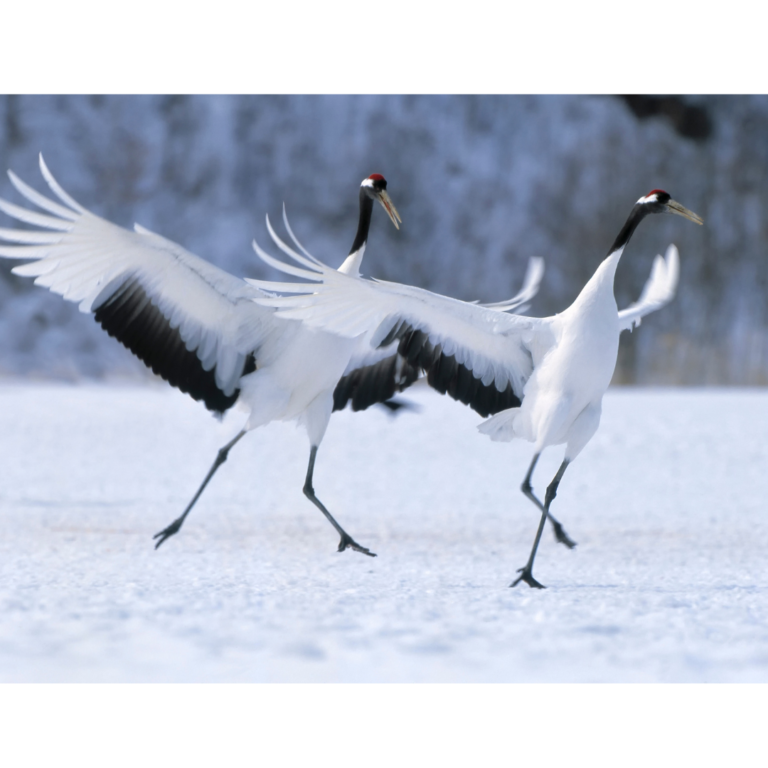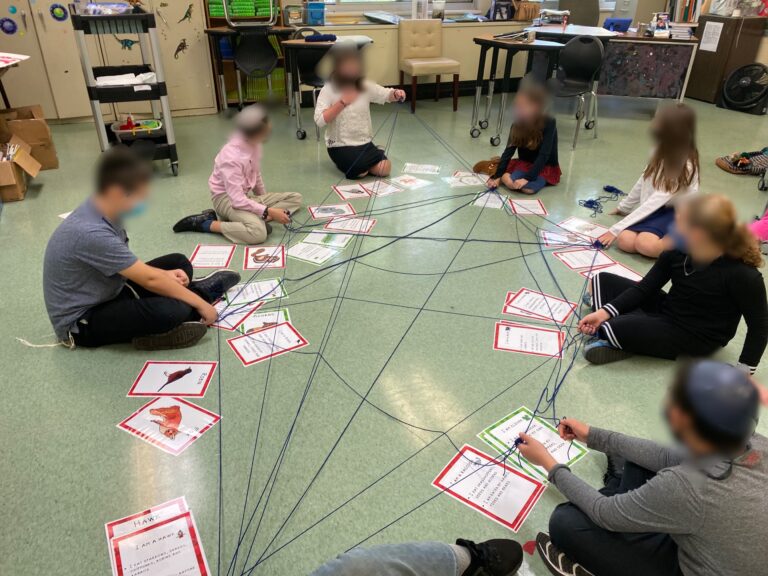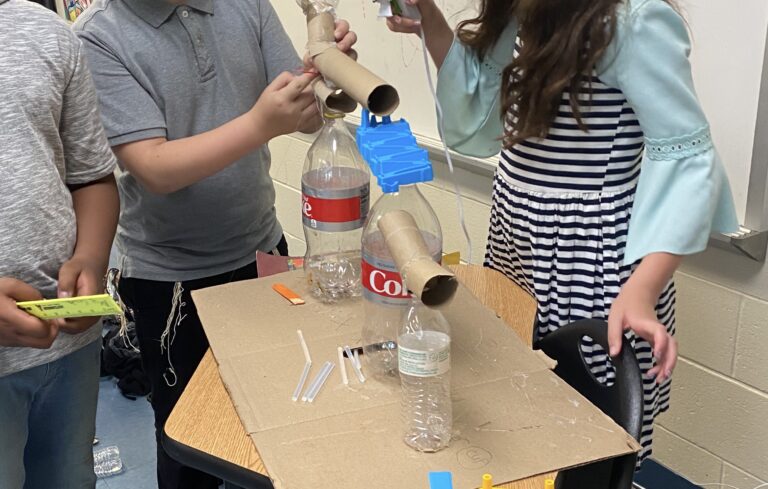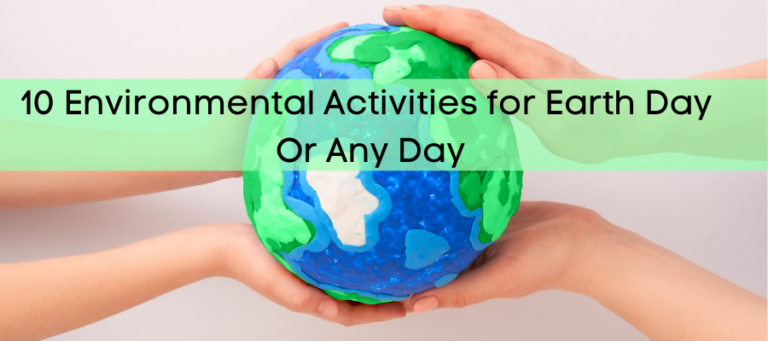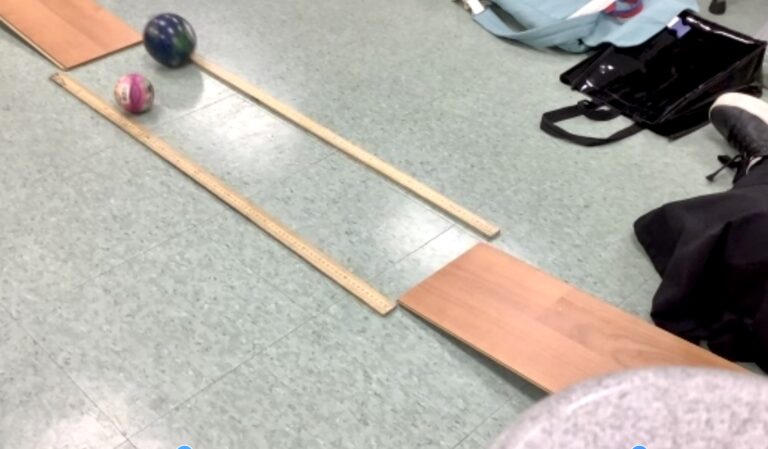Teaching Students About the Threat of Invasive Species
Do your students understand the threat of invasive species? Are you doing a unit on how biological components of an ecosystem affect populations(MS-LS2-4 or HS-LS2-7)? Students may be surprised to learn that some of the “local animals”, that they grew up with, are actually non native!
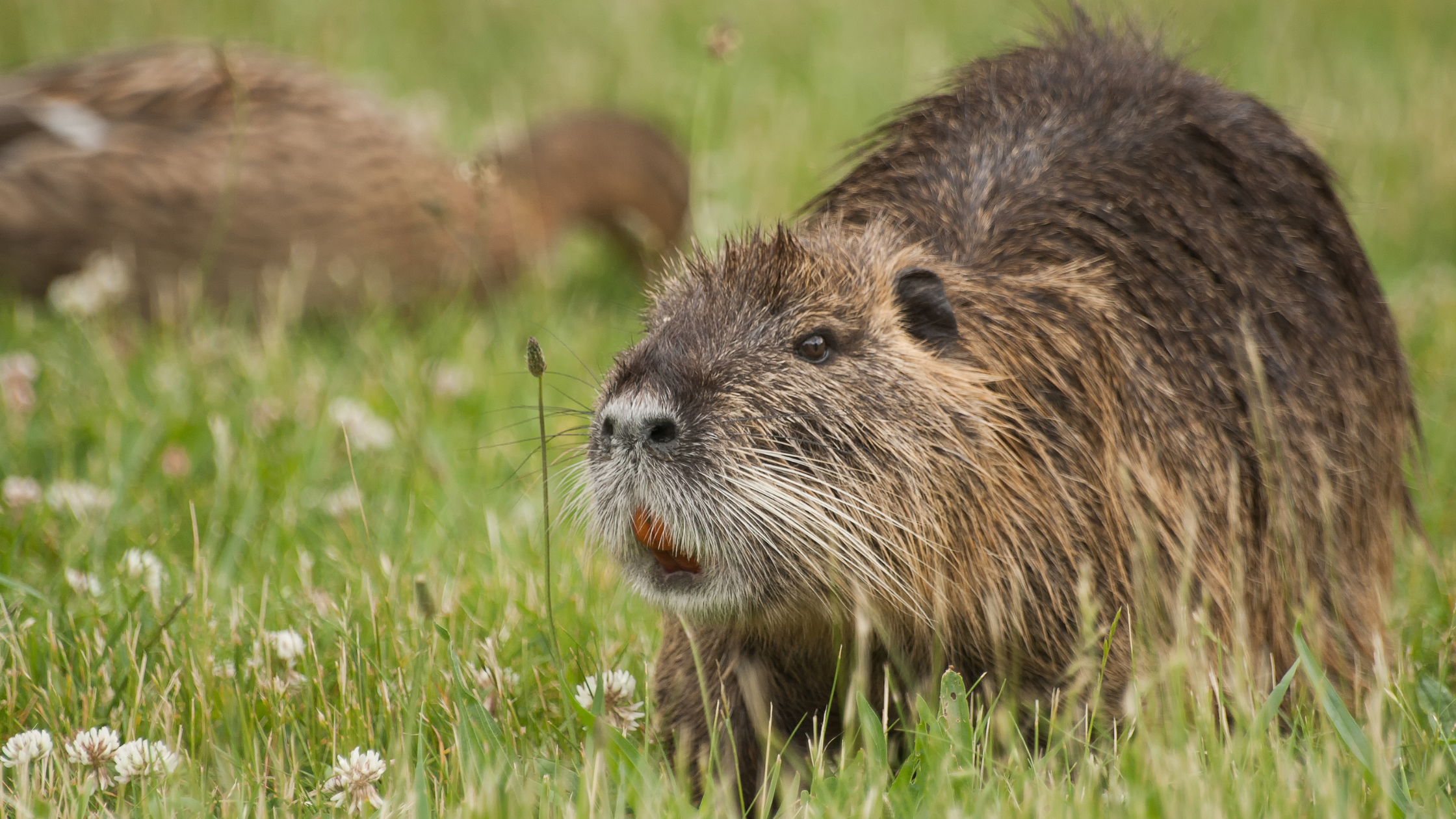
Teaching Students About the Threat of Invasive Species
Updated February 18, 2023
I like to start with a basic introduction of “what in the world is an invasive species?” What does invasive actually mean? If we are being invaded by something, is that a good thing? Let’s brainstorm how it can be a problem for a local food web if an animal from another food web suddenly arrives.
Start Learning About the Threat of Invasive Species with a Dice Game
I start my unit with a dice game using a desert food web. The students start by looking at the various food chains from a “normal” desert web.
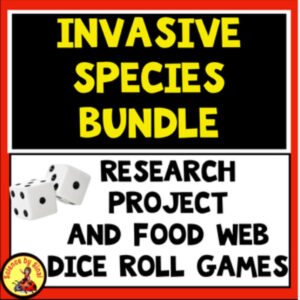
I have pictures of plants and animals arranged in a circle in my activity called Invasive Species Desert Food Web Dice Roll Game. Either using their devices, or on paper with a pencil, students draw lines to connect the different animals of the food chains. We pause to look at the interconnectivity and how complex it is. Who are the producers, first consumers, second consumers and top predators? What would happen if even one connecting line was erased?
Now let’s look at the chart to see what some invasive species may be in the desert. Students may be surprised that a Burro(donkey) or Feral Pig, are actually invasive species that are causing a tremendous problem in the American deserts!
I divide students into groups and give them a pair of dice. They throw the dice and add the number of the two die together. They take that number to the chart of invasive species events and find out which species has invaded the food web.
With their device, or with their pencil, they will ERASE the lines that connect any plants or animals that have been affected by that new invasive species. Now the web looks different! They roll the die two more times and erase the corresponding lines of the food chains.
One of my favorite parts about this game is that no two groups will come up with the exact same results! This leads to great discussions and I have two pages of reflection questions for the students to get deep into critical thinking.
The Threat of Invasive Species Does Not Always Cause Native Animals to Die Off
One of the points I like to bring up is that the invasive species, such as the Buffelgrass in the American West, can actually make NATIVE species populations explode.
For example, the Gambel’s Quail is used to having to run from clump to clump of native grass to hide from predators, from either above or on the ground. The dense, tall invasive Buffelgrass gives Quails lots of extra cover so they don’t have to hide as much. Their population has exploded! We talk about how this could be a problem in terms of what the Quails eat and who eats them. It may also cause the Coyote population to explode, since they have so much food. However, with so many Coyotes, other prey animal populations may suffer.
Researching Common Invasive Species
Let’s have the students do some research of their own. We start by looking at the threat of invasive species in general and then we look at a chart of some of the more common invasive species. I hear things like “But wait! We see Starlings in my yard all the time!” or “That English Ivy is growing up the side of my house!”.
Most students have never heard of a Nutria or a Kudzu plant, so we look at the images in my research product and other websites. Now the students choose a specific plant or an animal to do their own research.
Holly from Flying Colors Science has this awesome invasive species “Wanted” poster, so that once students choose their plant or animal, they can take an image and put it in the poster. She also suggested visiting USDA’s Invasive Species Website for more examples. We can hang the posters around the room before the students even start the research. It is a great “Coming Soon” bulletin board!
The students work on a graphic organizer for the research project, which covers where the plant or animal is originally from and how does it fit into its natural habitat. What did it eat? Who were its predators in its own food web?
Then they research WHERE is the species invasive now and WHY is this a problem?
We have a presentation day or a gallery walk of “Wanted posters“ with QR codes to the presentations. As the students walk around you could have them fill out specific questions about each of the plants or animals as a summary. If you don’t want to use the QR codes, you could simply have the graphic organizers hung around the room.

Looking at the Invasive Zebra Mussel
Now it’s time to be very specific and dig deep into one example of an invasive species that has had an insane exponential growth in North America. Students learn about the Zebra Mussel as they do the Flying Colors Invasive Species Graphing activity. After reading about the Zebra Mussels invading the North American waterways, students graph the increase in population over the years.
How are Zebra Mussels hurting local Mussels? The Swan Mussel is native and is feeling the effects of the invasion. Students graph the negative impact the Zebra Mussels are having on this Swan Mussel. Learning about one specific species like this can really drive the concept home.
So let’s pull it all together while using Holly’s CER grid (you know I love my CER! Boost Your Student’s Critical Thinking with CER in Science Class) to have students really dig in with their analysis.
This unit on human impact tends to be very eye-opening for the students. As I mentioned above, most students have never heard of the threat of invasive species and had no idea that many are around us every day.
My desert dice game and the research project can be found in my Teachers Pay Teachers store. Please check out my other human impact activities in my Earth Day post called 10 Environmental Activities for Earth Day or Every Day.


